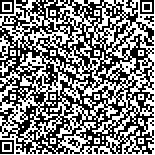| 摘要: |
| 用包埋脱水法冰冻保存绿色巴夫藻(Pavlovaviridis)、湛江等鞭金藻(Isochrysiszhanjian gensis)和球等鞭金藻(Isochrysisgalbana3011)等三种海洋饵料金藻,探讨了脱水速率、胶球含水量以及化冻后恢复方法对冰冻保存存活率的影响。结果表明,三种藻都在–0.9%含水量/h的平均脱水速率下获得最高存活率。各种藻在冰冻前的胶球最佳含水量不同,绿色巴夫藻为35%,湛江等鞭金藻和球等鞭金藻都为30%。化冻后,含绿色巴夫藻的胶球在培养基中2.2℃暗放置48h存活率最高;另两种藻在相对湿度为75%的气相中2.2℃暗放置12h存活率最高。在本实验条件下,绿色巴夫藻、湛江等鞭金藻和球等鞭金藻的冰冻保存的存活率可分别达到74%、1.5%和1.7%。 |
| 关键词: 包埋脱水法 冰冻保存 含水量 脱水速率 恢复方法 |
| DOI: |
| 分类号: |
| 基金项目:国家自然科学基金资助项目,30170099号、30470184号;辽宁省教育厅基金资助项目,20041015号;中国科学院知识创新工程资助项目,ZKCX2-211号 |
附件 |
|
| CRYOPRESERVATION OF MARINE GOLDEN-BROWN ALGAE (CHRYSOPHYCEAE) USED AS AQUACULTURAL DIET BY ENCAPSULATION-DEHYDRATION |
|
WANG Qi-Hua1, LI He2, ZHANG En-Dong1, GAO Yan-Ping1, LI Da-Peng3
|
|
1.School of Life Sciences, Liaoning Normal University, Dalian, 116029;2.Department of Biological Engineering, Dalian Nationalities University, Dalian, 116600;3.Institute of Oceanology, Chinese Academy of Sciences, Qingdao, 266071
|
| Abstract: |
| Three golden-brown algae(Chrysophyceae), Pavlova viridis, Isochrysis zhanjiangensis and I.galbana 3011 used as aquacultural diets, were preserved in liquid nitrogen using encapsulation-dehydration1 Algal cells in the early stationary phase were used for cryopreservation1 Harvested cells were encapsulated in 3% Ca-alginate beads with 30‰ NaCl, about 2 million cells in one bead. Beads were desiccated with silica gel then directly immersed in liquid nitrogen1 Cell viability after thawing was evaluated by its chlorophyll content. The main factors influencing cell viability, such as dehydration rate, water content of beads, recovery methods after thawing, were studied.The results were as follows.
Effect of dehydration rate: Various dehydration rates were attained by regulating the weight of silica gel in Petri dishes. At different dehydration rates, all the three algae obtained highest viabilities at the dehydration rate of –0.19% water content/h. Cell viability was low at either high or low dehydration rate. This is perhaps related to their own tolerance against desiccation and freezing. Some reports showed that several green algae also achieved high viability at the dehydration rate of –0.9% water content/h using encapsulation-dehydration. It is possible that the dehydration rate of –0.9% water content/h is common to many marine microalgae.
Effect of water content on cell viability: Water content of plant material is the key factor influencing cell viability using encapsulation-dehydration. For every alga species, the optimum water content of beads before being freezen is: P. viridis 35%, I. zhanjiangensis and I. galbana 3011, 30%. The highest viability of P. viridis reached 74.4% when it was dehydrated to its optimum water content. As for other two algae, their highest viabilities were 15.3% and 17.4% respect ively. Some research on green algae reported 40% optimum water content. This research, however, showed the optimum range of water content for the three golden-brown algae is between 30% and 35%.
Effect of recovery methods after thawing: After thawing, three recovery methods were used before re-cultivation. The highest viability of P. viridis was obtained when beads were incubated in culture medium for 48h in darkness at 22°C. The other two algae, the optimum condition is in a gas phase with 75% relative humidity for 12h in darkness at 22°C. Various researches have shown that recovery methods depend on algae species.
In this study, cell cryopreservation viabilities of P. viridis, I. zhanjiangensis and I. galbana 3011 could reach a maximum of 74.4%, 15.3% and 17.4% respectively. |
| Key words: Encapsulation-dehydration, Cryopreservation, Water content, Dehydration rate, Recovery method |
